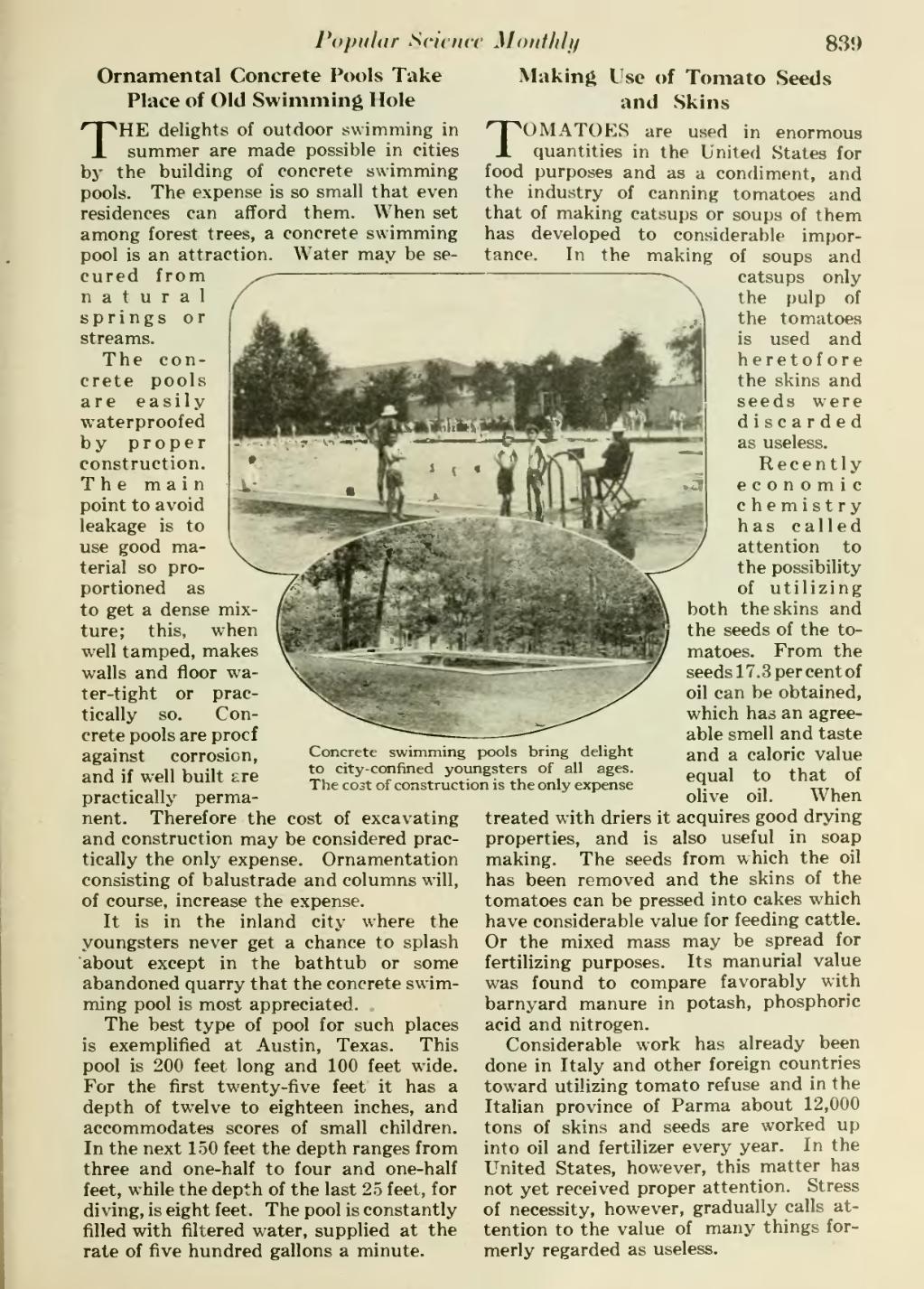Popular Sricncr Moiii/ili/
��839
��Ornamental Concrete Pools Take Place of Old Swimming Hole
THE delights of outdoor swimming in summer are made possible in cities by the building of concrete swimming pools. The expense is so small that even residences can afford them. When set among forest trees, a concrete swimming pool is an attraction. Water may be se- cured from natural springs or streams.
The con- crete pools are easily waterproofed by proper construction. The main point to avoid leakage is to use good ma- terial so pro- portioned as to get a dense mix- ture; this, when well tamped, makes walls and floor wa- ter-tight or prac- tically so. Con- crete pools are procf against corrosion, and if well built are practically perma- nent. Therefore the cost of excavating and construction may be considered prac- tically the only expense. Ornamentation consisting of balustrade and columns will, of course, increase the expense.
It is in the inland city where the youngsters never get a chance to splash about except in the bathtub or some abandoned quarry that the concrete swim- ming pool is most appreciated.
The best type of pool for such places is exemplified at Austin, Texas. This pool is 200 feet long and 100 feet wide. For the first twenty-five feet it has a depth of twelve to eighteen inches, and accommodates scores of small children. In the next 150 feet the depth ranges from three and one-half to four and one-half feet, while the depth of the last 25 feet, for diving, is eight feet. The pool is constantly filled with filtered water, supplied at the rate of five hundred gallons a minute.
��T
���Concrete swimming pools bring delight to city-confined youngsters of all ages. The co3t of construction is the only expense
��Making Use of Tomato Seeds and Skins
^OMATOES are used in enormous quantities in the United States for food purposes and as a condiment, and the industry of canning tomatoes and that of making catsups or soups of them has developed to considerable impor- tance. In the making of soups and
catsups only the pulp of the tomatoes is used and heretofore the skins and seeds were discarded as useless.
Recently economic chemistry has called attention to the possibility of utilizing both the skins and the seeds of the to- matoes. From the seeds 17.3percentof oil can be obtained, which has an agree- able smell and taste and a caloric value equal to that of olive oil. When
��treated with driers it acquires good drying properties, and is also useful in soap making. The seeds from which the oil has been removed and the skins of the tomatoes can be pressed into cakes which have considerable value for feeding cattle. Or the mixed mass may be spread for fertilizing purposes. Its manurial value was found to compare favorably with barnyard manure in potash, phosphoric acid and nitrogen.
Considerable work has already been done in Italy and other foreign countries toward utilizing tomato refuse and in the Italian province of Parma about 12,000 tons of skins and seeds are worked up into oil and fertilizer every year. In the United States, however, this matter has not yet received proper attention. Stress of necessity, however, gradually calls at- tention to the value of many things for- merly regarded as useless.
�� �
